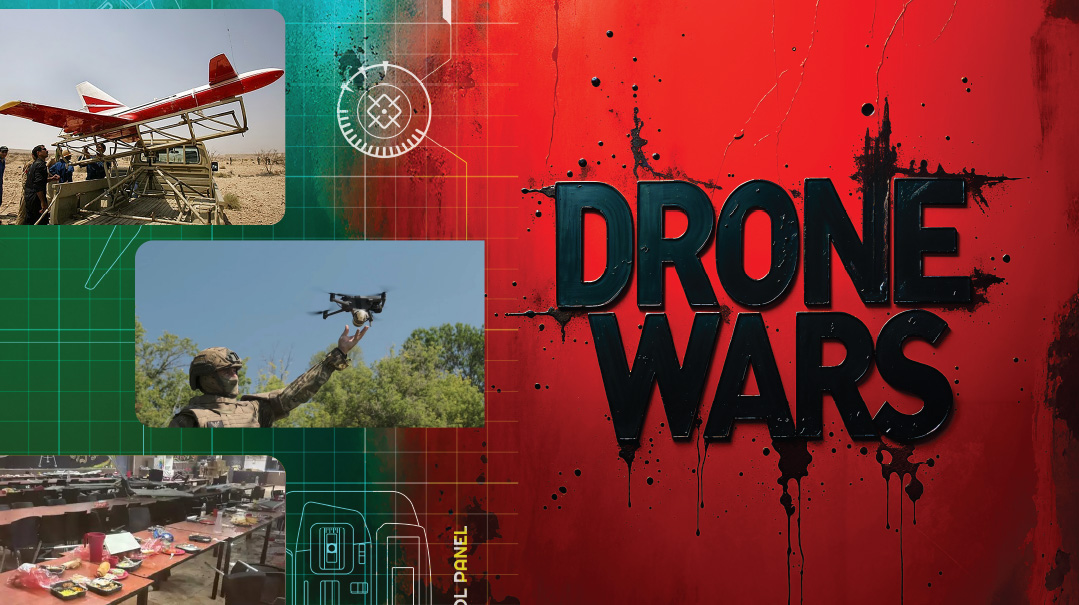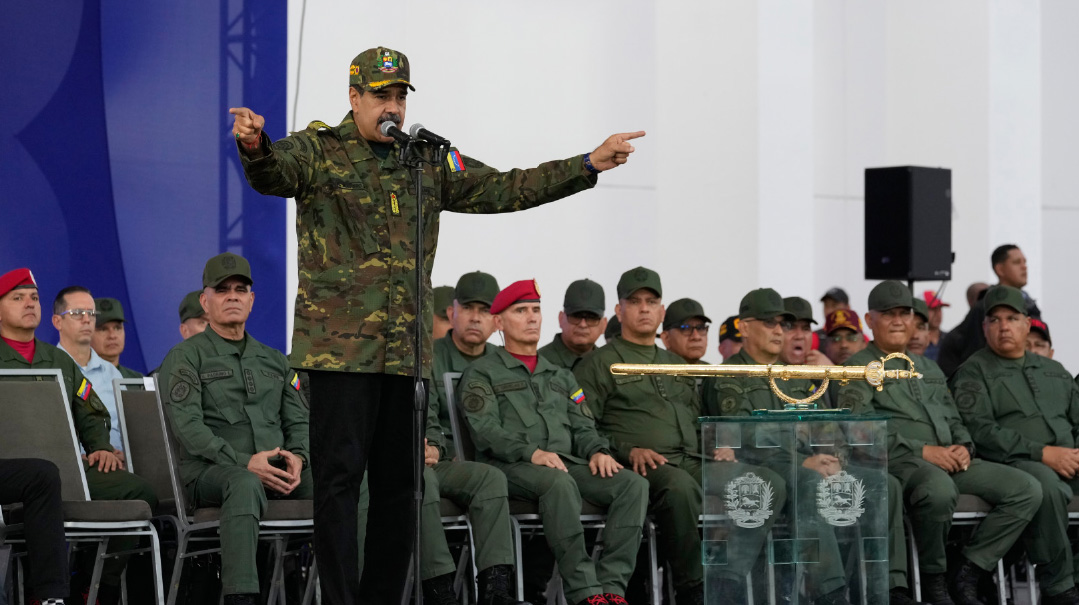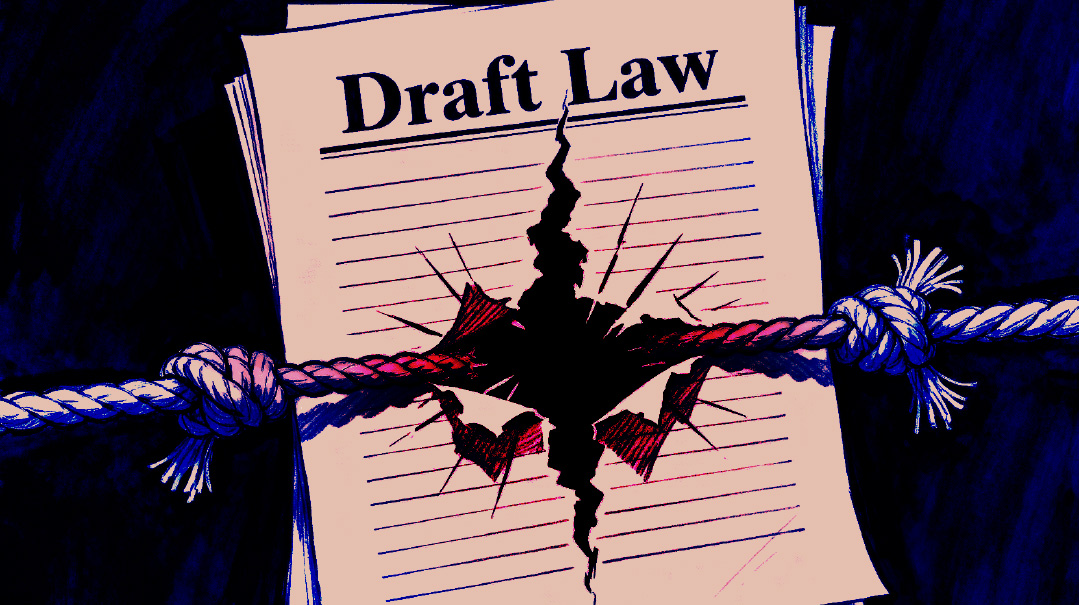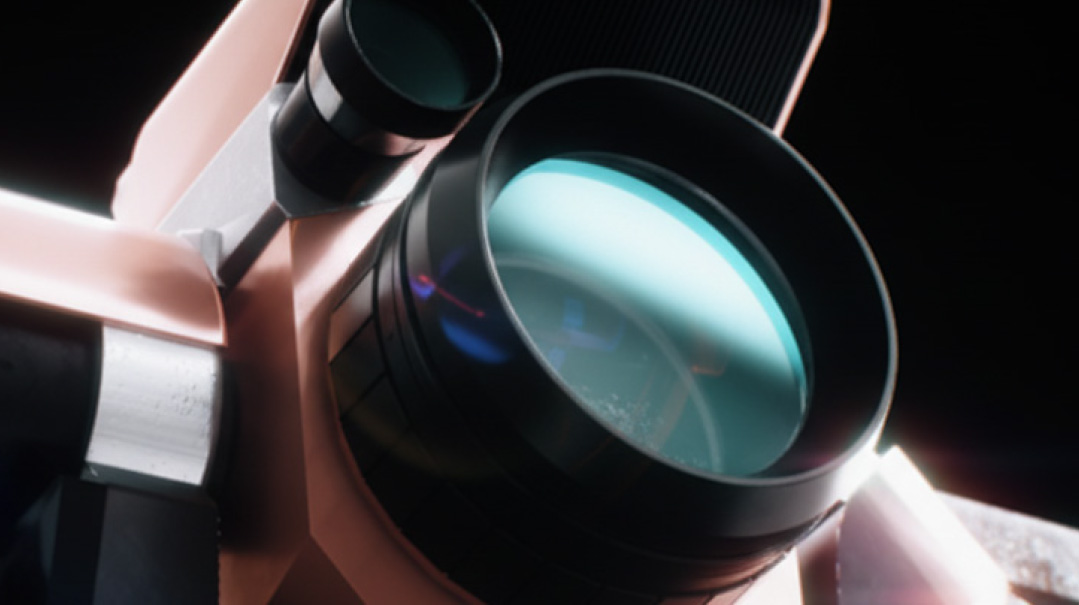Drone Wars
| November 6, 2024Racing to counter the rise of the UAV, can Israel win the new arms race?

Iran’s low-tech drones have created a deadly new battlespace, baffling advanced air defense systems and causing havoc across home front and military bases alike. Racing to counter the rise of the UAV, can Israel win the new arms race?
When the Magen David Adom teams reached the soccer field in Hurfeish, a Druze village in northern Israel, they found a war zone.
For a group of tired soldiers who’d stopped to rest, downtime had turned deadly as a Hezbollah drone slammed into the open space just over a mile from the Lebanon border with no warning.
The wounded were strewn everywhere and paramedics performed triage when suddenly, the dormant Red Alert siren howled into life — too late. A second drone exploded among the soldiers and medics, claiming the lives of two soldiers and wounding ten others.
The Hurfeish incident in early June was one more blood-soaked step on the path to full-blown war in the north, persuading Israel that only IDF boots on the ground in Lebanon could halt the deadly attacks.
But the incident was only one in a wave of unprecedented attacks that hit deep in Israel over the summer and autumn. In Tel Aviv, a Houthi drone fired from Yemen penetrated Israel’s air defenses without advance warning and struck downtown, killing one person. At the critical Rafael defense factory between Karmiel and Acco, two workers were injured. In the south, an Iraqi drone penetrated through Jordan and struck a navy base in Eilat; another one hit a base in the Aravah. The prime minister’s house in Caesarea was badly damaged in one attack last month, and in a Golani infantry training base in Binyamina, four soldiers were killed and 58 wounded in an attack that shocked the country.
This litany of behind-the-lines carnage signals a profound shift in warfare that is sweeping the world’s battlefields. From first-person-view quadcopter drones available in toy stores that can be modified to carry grenades and guns, to primitive-but-deadly long-range drones produced by Iran, the rise of the drone is a revolution.
While Israel’s air defenses are programmed to deal with missiles and fighter jets, they struggle with this simpler threat — drones that cost just a few thousand dollars apiece and that carry explosive payloads of dozens of kilograms.
The problem begins with detection. Made largely of plastic and carbon fiber, which are nearly impossible for radar to detect, the drones fly low, at speeds of 180 miles per hour (300 km/h) — too slow for fighter jets to be able to effectively target them, but fast enough to get from Lebanon, Yemen, Iraq, or Iran into the heart of Israel within minutes.
Even when they are detected, intercepting them is complicated. Heat-tracking missiles struggle to lock into their low thermal footprint. And even when the defense systems are successful, the cost is tremendous — an expensive missile is needed to intercept a drone that is worth a tiny percentage of what the interceptor costs.
So far, the drone strategy is amply paying off for its creator — Iran, which identified the drone as the perfect asymmetrical tool, capable of acting as an air force and terror weapon in tandem.
The ascent of the drone is both hyper-modern — the ultimate marriage of computer chips and camera technology — and very retro. The sight of noisy, slow projectiles plummeting to the ground is something straight out of World War II, when Nazi Germany’s V1 rockets plagued Londoners.
As the IDF struggles to deal with the latest threat, the response is disturbingly retro as well, with reports of a World War II–style aerial observer corps assigned to visually sight the drones that are evading Israel’s radar.
In this old-new battle for the skies, as drone operators thumb their noses at vastly expensive aerial arrays, will Israel send the upstart drone back to the toy stores where they belong?
Oops! We could not locate your form.







